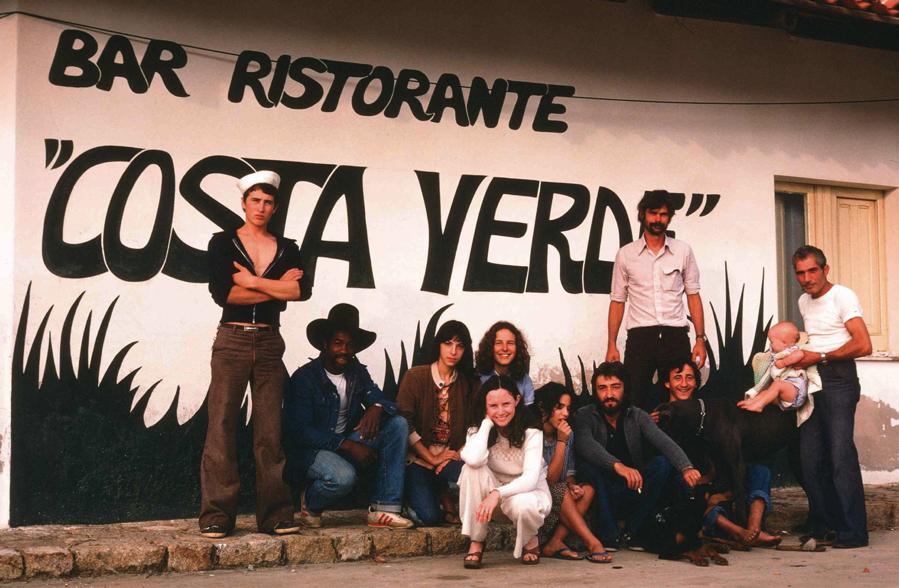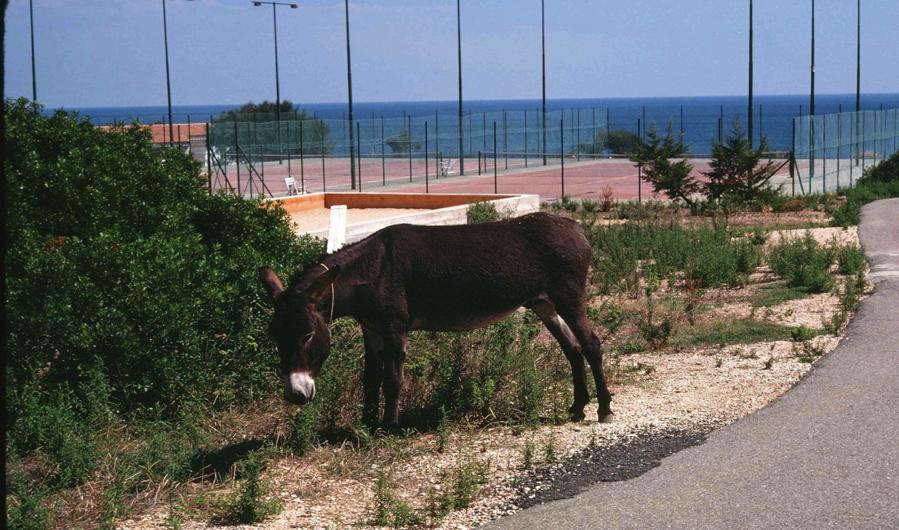When I sat down and tried to imagine a text between the seams of both portraits and cinema, two friends influenced me. Elizabeth Willis had written a manuscript called Turneresque – poems based on “B” film noir movies. Diane Ward had crafted a chapbook entitled A Portrait of Myself As If Through My Own Voice, a text of self-portraiture exacted under unimagined circumstances. I began to visualize a portrait of selves as written through movies.
With two girls in their teens, I had lately become obsessed with films that I had not seen when I was a teenager. Around the age of twelve, I had badly wanted to see Dr. Zhivago, but was stopped by the critique of one of my father’s law partners, who cautioned the movie unsuitable for young girls because of the explicit love scenes. Having seen the previous David Lean film, Lawrence of Arabia (somehow the hints of homosexuality escaped my censor’s radar), I argued vociferously and unsuccessfully. Why, I countered, could I read The Story of O, one of my mother’s informal and Catholic book club selections, and not see Dr. Zhivago? Imagination has always seemed more incendiary to me than reality, or its mimesis in art.
For my collection luce a cavallo,1 I chose as my subject movies made between the mid sixties and mid seventies. Films from this period have been characterized as independent, anti-establishment, and original. Part of this was due to the politics and general cultural upheavals of the time. Along with an adulterous doctor of the Russian revolution, subject matter could include a virtuous crook (Accattone), a short-order cook who makes a pact with the devil (Bedazzled), a privileged woman who moonlights as a prostitute (Belle de Jour), an ambitious working girl (Darling), an undercover cop trying to bust heroin smugglers (The French Connection), and a British spy who opts to live in an insane asylum (The King of Hearts). . . a far cry from Singing in the Rain or My Fair Lady (not that I don’t admire those films). The content naturally predicates an edgy sensibility, both in the films, and later, in my poems.
Pasolini stated in one of his last poems that “The Revolution is more than a feeling.”2 He could have said “The Revolution is no less than a feeling.” Because of his homosexuality, the personal was deigned to be eternally political. But here he elucidates what attracted him to the larger, more social world of film:
“The desire to express myself through the cinema comes from my need to use a new medium, a technique for renewal. It also signifies a desire to escape the obsessive . . . finally, it will let me live in accord with my philosophy.”3
Renewal. Escape from the obsessive. Live according to one’s philosophy. Language often takes a familiar course; an intervention must be made to refresh its consequences. Even poets (wordsmiths as we are) unconsciously utilize formulaic phrases, images, and verbal intonations. Like the printer who keeps little sticks of letters ready made up for standard phrases (clichés), the urge always exists to relapse to comfortable and acquiescent forms of thought. And while these conditioned phrases can be used in original contexts, often their application only enforces comfortable and acquiescent forms of address. In order to say “something new” – in the Poundian sense – it’s first necessary to break up all these clichés, reconfigure the letters.
Likewise, the filmmaker of the mid sixties to mid seventies viewed much of what emerged from Hollywood as composed of visual clichés. Instead of having only one template to create a film, they allowed the individual subject matter to determine technique. Pasolini, in his famous essay The Cinema of Poetry, creates a linguistic debate surrounding the auteur phenomenon. The cinema of poetry appropriates a lineage of shared signs that predate the cinematic language of images: the language of gestures, of environment, of memory, and of dreams. All these languages are “irrational”, that is, not intentional. The filmmaker employs a method that Pasolini refers to as “the free indirect point of view” to insert poetic sensibility into an otherwise narrative event.
“ . . . because it (the cinema) is dreamlike, because it is close to dreams, because a cinema sequence and a sequence of memory or of a dream – and not only that but things in themselves – are profoundly poetic; a tree photographed is poetic because physicality is poetic itself, because it is an apparition, because it is full of mystery, because it is full of ambiguity, because it is full of polyvalent meaning, because even a tree is a sign of a linguistic system. Because who talks through a tree? God, or reality itself.”4
A film’s genesis is usually referred to as development. Development is a catch-all phrase, used to synthesize the many and varied elements that create a film – the writing, the director’s vision, the visualization. The visualization, or storyboarding, describes the gathering and arrangement of dialogue and image to instruct the cinematographer and director in how to shoot the film. In truth, each film, as each poem, is constructed in an entirely original fashion. One of Director Michel Gondry’s (Eternal Sunshine of the Spotless Mind) childhood models was the string tricks a French magician did on TV. Similar to how Nabokov envisioned words as different colors, Rimbaud exclaims the “alchemy of the word”:
“I invented the color of vowels! – A black, E white, I red, O blue, U green. – I regulated the form and the movement of every consonant, and with instinctive rhythms I prided myself on inventing a poetic language accessible some day to all the senses. I reserve all rights of translation.”5
For all senses. I reserve all rights to translation. How does any poet, or any artist, for that matter, articulate the very process of creating? And if one achieves the self-consciousness to do so, does this very articulation interfere with the poetic act itself? Isn’t the story of every poem as enigmatic as dreaming or meditating? Jean Claude Carrière recounted, on a radio show, how Bunuel interviewed him for the position of potential collaborator /screenwriter, with only two questions: “Do you drink wine? Do you dream?”
The placement of words, images, and later, sound, denotes immediately a kind of morality, or in the case of the Spanish film-maker Pedro Almodovar, a nonjudgmental sensibility. Language hints at an end game, a kind of resolution both elusive but knowable when read or spoken.
“The artist’s dilemma is of a peculiar sort. He must practice in order to perform the craft components of his job. But to practice always has a double effect. It makes him, on the one hand, more able to do whatever it is he is attempting; on the other hand, by the phenomenon of habit formation, it makes him less aware of how he does it.”6
Habitually driving around LA, a metropolis fenced by snow-patched mountains visible from the beach, one’s mind drifts into the lyric generosity of a long shot, either hand held or dolly. These fluid camera movements allow time to leisurely unfold, elements to spontaneously disperse. They do not translate into one image, but like a tune unconsciously hummed, a “narrative” emerges that naturally embarks from one gesture to another. A breath of words, a tonal interplay. But while words, images, and sound constitute the poem, they are not about the poem itself. In truth, our poetic processes are closer to dreams and their often opposite, but totally undirected, intentions. Each poem, as each moment, requires a uniquely organic and instinctive response.
Notes
- luce a cavallo” is the phrase that the Italian crew of The Black Stallion used to describe the magic hour. It literally means “a good time to get on a horse:” that is, a good time to start something new.
- Pier Paolo Pasolini, The Divine Memesis.
- De Guisti, ed., Pier Paolo Pasolini: Il cinema in forma di poesia.
- Oswald Stack, Pasolini on Pasolini.
- Arthur Rimbaud, A Season in Hell and the Drunken Boat.
- Gregory Bateson, Steps To An Ecology Of Mind.


